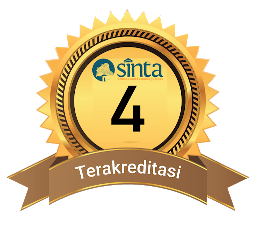Development of E-Student Worksheets Integrating Microscale Lab using Mamaq Culture on Acid-Base Material Class Xi
DOI:
10.29303/cep.v8i1.7910Published:
2025-05-31Issue:
Vol. 8 No. 1 (2025): Edisi MeiKeywords:
Development, Microscale lab, E-LKPD, Acid-Base, MamaqArticles
Downloads
How to Cite
Abstract
This research aims to develop chemistry learning media by integrating a small-scale laboratory (microscale lab) using the mamaq culture approach to improve students' conceptual understanding of acid-base material. This research is a development research with a 4D model design (Define, Design, Develop, Disseminate). The media developed is a Student Worksheet in electronic form (E-LKPD) which is uploaded to the website, making it easy to access and allowing the addition of images and learning videos related to acid-base material by associating it with mamaq culture. In addition, this E-LKPD also contains quizzes, sample questions, and evaluations to measure students' understanding of the material studied. This LKPD was developed using an experimental approach, integrated with a small-scale laboratory that allows practicum outside the lab with smaller tools and materials without reducing the essence of the practicum. This medium has been validated by two validators using a validation questionnaire, and the data was analyzed with an average formula, resulting in a score of 3.32 in the very valid category. Furthermore, a trial was carried out to assess the practicality of this media, by collecting responses from teachers and students. The results of the practical test showed a score of 91% from teachers and 85% from students, both in the very valid category.
References
Anwar, Y. A. S., Loka, I. N., Junaidi, E., Idrus, S. W. A., & Siahaan, J. (2023). Eksplorasi Budaya di Lombok Timur Sebagai Sumber Belajar Kimia. Chemistry Education Practice, 6(2), 183–190.
Audie, N. (2019, May). Peran media pembelajaran meningkatkan hasil belajar peserta didik. In Prosiding Seminar Nasional Pendidikan FKIP (Vol. 2, No. 1, pp. 586-595).
Azwar, S. (2012). Reliabilitas dan Validitas. Yogyakarta: Pustaka Pelajar.
Brinus, K. S. W., Makur, A. P., & Nendi, F. (2019). Pengaruh Model Pembelajaran Kontekstual terhadap Pemahaman Konsep Matematika Siswa SMP. Mosharafa : Jurnal Pendidikan Matematika, 8(2), 261–272.
Faridah, A. (2024). Pengembangan Media Ajar Berbasis Audio Visual (Analisa Penggunaan Transmitter Bagi Jama’ah Haji Kabupaten Ngawi). Al-Mabsut : Jurnal Studi Islam dan Sosial, 18(1), 15–34.
Harsiwi, U. B., & Arini, L. D. D. (2020). Pengaruh Pembelajaran Menggunakan Media Pembelajaran Interaktif terhadap Hasil Belajar siswa di Sekolah Dasar. Jurnal Basicedu, 4(4), 1104–1113. https://doi.org/10.31004/basicedu.v4i4.505
Muammar, & Suhartina. (2018). Media Pembelajaran Berbasis Teknologi Informasi dalam Meningkatkan Minat Belajar Akidah Akhlak. KURIOSITAS: Media Komunikasi Sosial dan Keagamaan, 11(2), 176–188. https://doi.org/10.35905/kur.v11i2.728
Mukarromah, A., & Andriana, M. (2022). Peranan Guru dalam Mengembangkan Media Pembelajaran. Journal of Science and Education Research, 1(1), 43–50. https://doi.org/10.62759/jser.v1i1.7
Neni, T. (2021). LKPD Berbasis Eksperimen: Tingkatkan Hasil Belajar Siswa. Guepedia.
Nisa, U. M. (2017). Metode Praktikum untuk Meningkatkan Pemahaman dan Hasil Belajar Siswa Kelas V MI YPPI 1945 Babat pada Materi Zat Tunggal dan Campuran. In Proceeding Biology Education Conference: Biology, Science, Enviromental, and Learning, 15(1), 62–68.
Putra, A., & Milenia, I. F. (2021). Systematic Literature Review: Media Komik dalam Pembelajaran Matematika. MATHEMA: JURNAL PENDIDIKAN MATEMATIKA, 3(1), 30. https://doi.org/10.33365/jm.v3i1.951
Putra, L. D., & Pratama, S. Z. A. (2023). Pemanfatan media dan teknologi digital dalam mengatasi masalah pembelajaran. Journal Transformation of Mandalika, e-ISSN: 2745-5882, p-ISSN: 2962-2956, 4(8), 323-329.
Riduwan. (2013). Cara Mudah Menggunakan dan Memakai Path Analysis (Analisis Jalur). Bandung: Alfabeta.
Ruswan, A., Rosmana, P. S., Najayanti, Husna, M., Nurhikmah, I., Irsalina, S., Azahra, R., & Faqih, A. (2024). Pemanfaatan Media Pembelajaran Berbasis Android pada Kurikulum Merdeka Sekolah Dasar. Jurnal Pendidikan Tambusai, 8(1), 97–105.
Sukmantari, H. N., Marsudi, I., & Raharjo, N. E. (2022). Pengembangan Modul Pembelajaran Penggunaan ArcGIS Online untuk Pembuatan Peta Penyebaran Gedung: Studi Kasus pada Peta Penyebaran SMK Kompetensi Keahlian DPIB di Daerah Istimewa Yogyakarta. Jurnal Pendidikan Teknik Sipil, 4(1), 62–69. https://doi.org/10.21831/jpts.v4i1.48498
Suryandaru, N. A., & Setyaningtyas, E. W. (2021). Pengembangan Media Pembelajaran Berbasis Website Pada Muatan Pembelajaran Matematika Kelas IV. Jurnal Basicedu, 5(6), 6040–6048.
Utari, D., & Muadin, A. (2023). Peranan Pembelajaran Abad-21 Di Sekolah Dasar dalam Mencapai Target dan Tujuan Kurikulum Merdeka. Jurnal Pendidikan Islam Al-Ilmi, 1(6), 116–123.
Wulandari, A. P., Salsabila, A. A., Cahyani, K., Nurazizah, T. S., & Ulfiah, Z. (2023). Pentingnya Media Pembelajaran dalam Proses Belajar Mengajar. Journal on Education, 5(2), 3928–3936. https://doi.org/10.31004/joe.v5i2.1074
Yuzan, I. F., & Jahri, I. S. (2022). Pengembangan E-LKPD Berbasis Inkuiri Terbimbing pada Pokok Bahasan Ikatan Kimia untuk Mengukur Kemampuan Berpikir Kritis Siswa. Ensiklopedia: Jurnal Pendidikan dan Inovasi Pembelajaran Saburai, 2(1), 54–65.
Author Biography
Riza Mahendra, Pendidikan Kimia Unram
License
Copyright (c) 2025 Riza Mahendra, Eka Junaidi, Yunita Arian Sani Anwar

This work is licensed under a Creative Commons Attribution-ShareAlike 4.0 International License.
Authors who publish with Chemistry Education Practice agree to the following terms:
- Authors retain copyright and grant the journal right of first publication with the work simultaneously licensed under a Creative Commons Attribution License 4.0 International License (CC-BY-SA License). This license allows authors to use all articles, data sets, graphics, and appendices in data mining applications, search engines, web sites, blogs, and other platforms by providing an appropriate reference. The journal allows the author(s) to hold the copyright without restrictions and will retain publishing rights without restrictions.
- Authors are able to enter into separate, additional contractual arrangements for the non-exclusive distribution of the journal's published version of the work (e.g., post it to an institutional repository or publish it in a book), with an acknowledgement of its initial publication in Chemistry Education Practice.
- Authors are permitted and encouraged to post their work online (e.g., in institutional repositories or on their website) prior to and during the submission process, as it can lead to productive exchanges, as well as earlier and greater citation of published work (See The Effect of Open Access).






